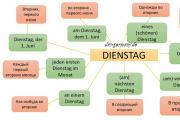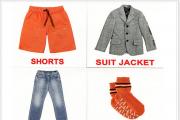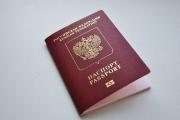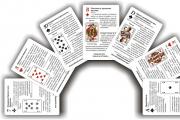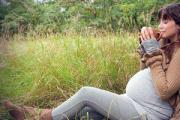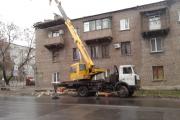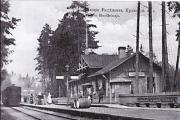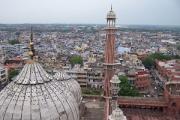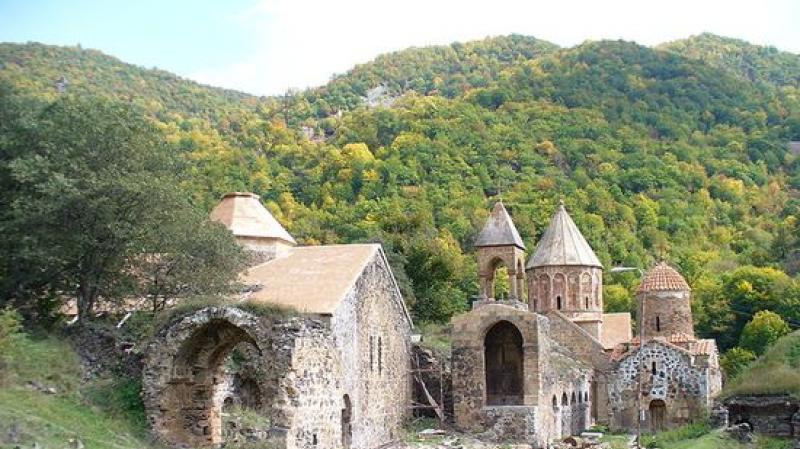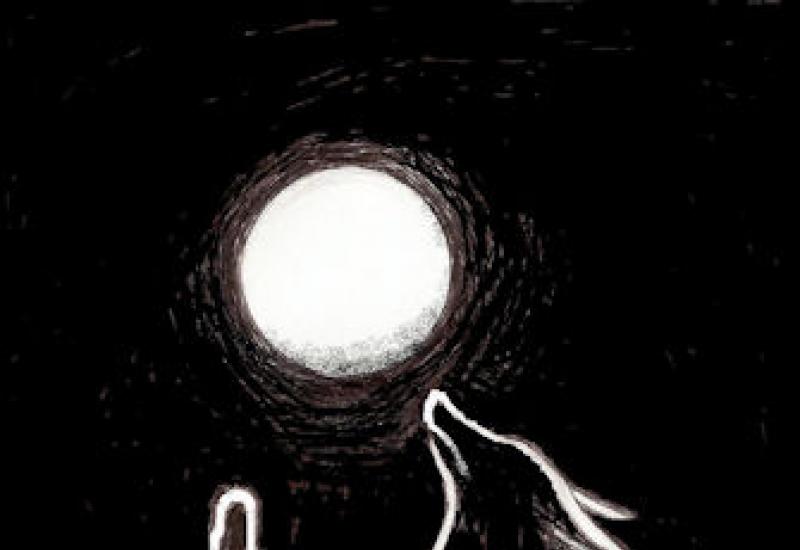Do-it-yourself tactile cube. Master class on making a developing cube. In order to form a face with a bug, you need
Educational toys for children have been in fashion for a long time. Some of them are quite within the power of mom to do on her own. We bring to your attention a developing cube, which will surely interest a child aged 1 to 3 years. Yes, you will have to tinker with sewing, but the result is worth it!
The face of this cube is 15 cm.
First you need to make a dense base: ideally, this is a cube of foam rubber. If you do not find large pieces of foam rubber, you can glue the cube from small pieces. Also, holofiber, synthetic wool, etc. are suitable as a filler. But in this case, the cube will be softer and keep its shape worse.
The base can be additionally covered with a fabric cover for strength.
Now you need to cut 6 squares measuring 17 × 17 cm (including allowances of 1 cm) from dense fabric - in this case it is gabardine.

Glue the fabric with interlining for greater density.
Everything, you can start creating each side of the cube.
Ladybug side
Such a story will surely interest the baby: ladybug you can unfasten it - a bear button is hidden inside, as well as pull the paws and count the spots on the back.Cut out 4 parts from red fleece (or other suitable fabric), 6 legs and specks from black felt, head and eyes from felt. Sew eyes to head, spots to 2 red parts. Carefully sew (or machine stitch) the zipper, inserting each edge between the two red pieces. Cut off the excess part of the zipper and sew the head to the back.
Baste the legs, inserting their ends between the parts of the body, and sew the ladybug to the base fabric. Sew a button inside firmly.



Cloud side
The child will love to stroke these fluffy clouds, and there is also a lacing with a bird button in this plot.Cut out clouds from white synthetic fur and sew to the base fabric. Baste small pieces of golden cord on the sides to each cloud (then, when sewing the sides of the cube, they will be securely fastened). At the bottom, fasten the cord with a button tied at the end with a few stitches.



Side "Beads"
Bright beads strung on an elastic cord, the child will move and pull with passion. There are 5 rows in total, with the number of beads from 1 to 5. It is better to take beads of different colors and from different materials.Cut the elastic into pieces 17 cm long, bast each piece in turn to the base, string the beads, then baste to the opposite side.

Side "Geometric shapes"
Thanks to this side of the cube, the baby will get acquainted with simple geometric shapes. They are multi-colored, and fastened with Velcro. Each figure has its own “place” on the base fabric, embroidered with threads of the same color.First, sew a zigzag braid to the base fabric crosswise.
Cut out a square, a circle (4.5 cm in diameter), a triangle and a rectangle from a dense material (felt, felt).
Then cut out “covers” for them from felt - 2 pieces each with seam allowances (0.5 cm each). Sew Velcro on one of the two sides (soft side).
Sew in pairs by hand "covers" of felt, putting a dense blank inside.
On the base fabric, sew in a narrow zigzag (or embroider by hand) the outlines of each shape with threads of the same color. Sew the hard sides of the Velcro into the centers.







Side "Flower-Semitsvetik"
The petals of this bright flower are made of fabrics with different textures, each petal with its own filler, which will undoubtedly interest the child.Cut petals about 6 cm long from fabrics of different colors, adding 0.5 cm seam allowances, 2 pieces each. Sew them with wrong side, leaving a hole at the base of the petal, turn right side out and stuff. Fillers can be as follows: beads and beads of different sizes, rustling cellophane, small ringing bells, synthetic winterizer, etc.
Sew up the left hole in each petal and sew onto the base fabric. From above, sew the middle of the flower from a shiny or just bright material.


Butterfly side
The child will surely enjoy playing with a caterpillar on a string: it eats grass and then turns into a butterfly. Bright flower buttons are also hidden in the grass.For this plot, you will need felt, a tight elastic band and a piece of strong thin cord.
Cut out the details from the felt - the caterpillar (2 pieces), butterfly wings and grass. On one part of the caterpillar, embroider the eyes and mouth. Pin the grass on the bottom of the base fabric, stitch it. Make 2 holes in the large part-wings for threading the elastic. Sew the end of the elastic to the base, thread the second through the holes in the wings and fasten to the fabric. Wings can be decorated with contrasting pieces of felt.
Sew the caterpillar by stuffing it with synthetic wool and securing the cord inside. Sew the other end of the cord to the base fabric. Sew the flower buttons firmly into the "grass".
With the birth of a child, caring mothers face the question: when does a child need toys? My personal opinion on this matter: from the first days. But not all toys will be interesting, necessary and useful for the baby. And, given the wide choice that manufacturers of educational toys provide us with, there is a chance that we will want to buy and buy, since it’s not so easy to sort out and choose. Fortunately, all this, as a rule, is not cheap.))
The first requirement for toys for children early age- safety. This condition is more than satisfied when playing with the so-called "crumbs". They also have a wide variety in stores. From about 3-4 months, when the baby already knows how to take objects, this toy can become a running toy. But there is an alternative to crumbs - soft developing cube, which you can also buy or sew do it yourself. Such a cube will interest the child much longer, because it can be made with different content: simple, tactile-sensory (for very young children) or more complex, with the possibility of role-playing games.
Today we offer you a small master class on sewing such do-it-yourself developing cube. Author - Shmeleva Svetlana.
Prepare for work:
Multi-colored square pieces of fabric of the size you need (6 pieces, of your choice);
Interlining;
Filler;
Materials for the desired developmental elements (buttons, beads, ribbons, felt, etc.);
Threads, a needle, a sewing machine (you can sew by hand, but on a typewriter, of course, it is better);
Do-it-yourself developing cube process description:
1. Cut out the squares from the fabric (if you have not already done so at the preparation stage).
 2. Cut out squares from non-woven fabric with a side 1.5 cm smaller than those from fabric.
2. Cut out squares from non-woven fabric with a side 1.5 cm smaller than those from fabric.
 3. We put interlining on the fabric and iron it so that it sticks.
3. We put interlining on the fabric and iron it so that it sticks.
 4.
4.
Now you need to decorate each square - make an application, embroider decorative elements, sew on buttons, beads, etc. Here, how fantasy will play out.
In my case it will look like this:
a) The first element is a spiral with moving beads. On the square, draw a spiral with a disappearing marker. We take a strong mesh fabric (tulle will not work, it is fragile), cut out a square and put it on the drawn spiral. We sew, and put beads inside.  b) The next square will be with a butterfly with rustling wings.
b) The next square will be with a butterfly with rustling wings.
Fold the fabric in half and draw a butterfly. Place rustling cellophane down under the fabric and sew along the contour.
 Cut out, cut 1-2 mm at the folds, make a longitudinal cut on one layer.
Cut out, cut 1-2 mm at the folds, make a longitudinal cut on one layer.
 Now turn out.
Now turn out.
 We take a lace as antennae, fold it in half and sew it in a zigzag in the right place.
We take a lace as antennae, fold it in half and sew it in a zigzag in the right place.
 Now we sew the butterfly with the same zigzag.
Now we sew the butterfly with the same zigzag.
 We close the incision with a rep tape, bending the edges.
We close the incision with a rep tape, bending the edges.
 I don’t paint the rest of the squares in detail, since they are easy to sew.
I don’t paint the rest of the squares in detail, since they are easy to sew.
c) Feast at the bears: sew on buttons:

d) Route: we adjust the lace in a zigzag.
For strength, a piece of felt is sewn under each button on the reverse side and the thread is tied tightly (safety first!).
 e) Bunny - application made of fleecy fabric.
e) Bunny - application made of fleecy fabric.
f) A bird with movable legs made of felt. The legs are sewn in the same way as the antennae of a butterfly
 and)
and)  h) Moving hearts:
h) Moving hearts:
 5. You can add ribbons of different textures to your taste (zigzag, narrow, wide, cords, as well as beads or buttons on the cords (we will sew their edges into the seams).
5. You can add ribbons of different textures to your taste (zigzag, narrow, wide, cords, as well as beads or buttons on the cords (we will sew their edges into the seams).
 6. It remains to sew and fill the cube. First we sew 4 squares into one strip.
6. It remains to sew and fill the cube. First we sew 4 squares into one strip.
 Now the rest of the edges:
Now the rest of the edges:
 7. We must fix all the seams, sew along the contour of the interlining.
7. We must fix all the seams, sew along the contour of the interlining.
 8. We sew a scan to get a cube. We join two faces, and wrap the allowance of the third inward.
8. We sew a scan to get a cube. We join two faces, and wrap the allowance of the third inward.
 9. We fix the corner that we wrapped inside with a pin so as not to accidentally flash it. We sew along the gcontour of non-woven fabric.
9. We fix the corner that we wrapped inside with a pin so as not to accidentally flash it. We sew along the gcontour of non-woven fabric.
 10. When stitching the last edge, leave an open hole in the corner. It remains to turn it out, fill it with synthetic winterizer or other filler, sew up the hole with a blind seam, and you're done!!! It is better not to stuff too tight, but you can put bells inside.
10. When stitching the last edge, leave an open hole in the corner. It remains to turn it out, fill it with synthetic winterizer or other filler, sew up the hole with a blind seam, and you're done!!! It is better not to stuff too tight, but you can put bells inside.
Difficulty: medium
Working time: 1 day
Materials: gabardine, buttons, decorative buttons, satin cord, cobweb, interlining, felt, fleece, threads
Today I will share with you how I sewed such a developing cube.
From the general idea (a cube with clasps) we move on to a particular one - the cube has six faces. So, we need to decide on the size, what kind of fasteners we will use, and how we will arrange it all. After thinking a little, I decided that the size of the cube would be 15 cm * 15 cm, and the faces would be as follows:
Buttons (separate felt birds fastened to the base);
- Velcro (separate felt fishes (with Velcro on the reverse side) are attached to the base on the mating parts of the Velcro + made it a little more complicated, but this will be seen later);
- Zipper (a tent that closes with a zipper);
- Lacing (opening edge - eyelets will be inserted along the edges of the "doors", through which it will be possible to thread the lace + elementary lacing behind the "doors" (I will show it clearly later));
- Carabiner (on the edge, where some animal is grazing, the carabiner will be "doors" in the fence);
- Tying a knot on a ribbon is another edge with doors. The doors are a gift box with a cake (cake inside) that is tied with a ribbon.
The plots of the faces can be absolutely any that come to your mind :) Not birds, for example, but the sun and clouds on buttons, not fish, but the moon and stars, a door with a zipper, a chest with a clasp-carabiner, lacing on a boot and much more other. You can come up with plots for the edges yourself (and this is a very exciting activity) or spy on the net.
When I had everything thought up, I drew a rough sketch:

I usually draw such sketches in Corel (corel draw), since there you can quickly sketch everything, experiment with colors right there, and also, the sketch can be instantly turned into a pattern and printed in the size we need (I immediately drew the edges on a scale of 1 :1)
Of the materials, in addition to the fasteners described above, we will need a fabric of different colors (I use gabardine - it has a fairly large palette, it does not fade and it has a suitable density), felt (I take sets of hard 1-1.2 mm), interlining (this a material that, with the help of an iron, can be glued to the fabric from the back, thereby making it denser and not allowing it to stretch in different directions as it pleases). Well, all sorts of little things - ribbons, ordinary and curly buttons.
Once again, I will make a reservation about the fabric... I take a solid color, because when fabrics with different patterns/patterns are used in one picture, the result can look clumsy and tasteless. If you (like me) doubt that you can beautifully combine patterned fabrics, you better not :) The cost of gabardine (or other simple plain fabrics) in stores ranges from 120 to 180 rubles. It is quite possible to afford to take several cuts of 20-30 centimeters.
So, everything is thought up, visualized, materials are available - let's start cutting!
I draw your attention to the fact that it is much more convenient to immediately cut all the elements of fabric and felt, and not to do this for each face separately, since for this each time you will need to get all the material and all the tools you need for this, and it’s very convenient in such a multi-color product, insert a certain color of thread into the sewing machine and sew all the elements of this color with it, and not change the thread for every little thing. Also, I’ll immediately make a reservation that we iron all the pieces of fabric so that everything turns out neatly, and this way it will be more convenient in work.
Button Edge: (for each edge, if you do everything for the first time and count the time for the pattern and cutting, it took me two hours):
According to the pattern, we cut out all the elements separately - a fabric of two colors ( Attention, since the cube is 15 * 15 pieces of fabric should be with an increase in seams - I have 17 * 17), and felt parts - everything can be seen in the photo. For the birds, I used ready-made felt eyes (they are on an adhesive basis). When I didn’t have such a wonderful thing, I either drew a pupil with a fabric marker or embroidered it with black thread.
We cut off everything superfluous from the green fabric so that we get a bush and tack it to the base. If you notice, I also sealed the green fabric with interlining, albeit in an economical version. :)
Sew on with a small zigzag. We estimate the location of all the details and mark it all in small pieces, sew on a twig and leaves.
We sew a bird (well, a flower) like this: first we sew a wing (central flower) and eyes (if they need to be sewn), then we sew both halves (not forgetting to add a beak).
The edge with Velcro for me is the seabed with fish, which "hides" behind hinged doors (sea and sky), which also close with Velcro.
To make the sea depths look more like depths, I used three shades of blue for the background. I glued the top of each piece with non-woven fabric so that when I sew them onto the base, they would not "go". Then, I cut out the curves of the waves I needed, swept the pieces together and sewed them to each other in a zigzag. Then again interlining.
On the front side, I outlined the small bends of the algae and stitched them on a typewriter (I have a special seam for this, although the typewriter is ordinary), but if you don’t have one, you can just sew on a line or ribbons.
Sewed - smoothed. Now it's the fish's turn. We cut the Velcro in the shape of our fish to fit in size and shape. Fish, like birds, we have two layers. Velcro is sewn to the wrong side of the fish, more precisely, the blank, which is larger in size than our "front" fish. We do this so that when we sew both halves, there is no visible seam (with which the Velcro was sewn), and there is no need to make sure that the halves match perfectly - just then we will cut off all the protruding parts of the wrong side.
(Velcro on the blank of the wrong side of the fish)
We sew the mating parts of the Velcro to the background, sew the fish, see what happened. I had a sheet of special felt with a marine life print, but even without it you can make elementary fish (as I did the birds above). If imagination is not enough, then good Google will always help with ideas :)
We emerge from the depths of the sea to the surface - go to the "doors". Since we have to make three faces with "doors", I will write everything in detail here. In general, everything is the same there, but there will be some nuances.
So, the size we need here is such that they are the same in width as the edge, and in height they are more than half (to get a smell - a place for attaching Velcro). I have, with seam allowances - 17 cm * 12 cm. The "doors" are double-sided, of course, which means we need two pieces for the "sky" and two pieces for the "sea". We glue the wrong side of all four pieces with interlining.
We make two front pieces so that they look like the sky and the sea. I added clouds to the sky, and waves to the sea (for me, again, this is a special line, but you can do without it). I also added a felt boat to the part with the sky to make it more fun.
(Unfortunately, the boat did not hit the frame)
We sew Velcro on the wrong side of the "sea" and on the front of the "sky".
Please note that the "sea door" overlaps the "heavenly" one, which means that on the "heavenly door" you need to leave a place for Velcro. Sorry, but I only have a photo of the "sky" from the inside out, but it shows how the door looks like, already sewn from two halves, but not yet turned inside out. If you look closely, you can see that the connecting seams are laid along the lines that I drew, once again specifying the dimensions so as not to “leave” anywhere, and so that the width at the “doors” turns out to be 15 cm. that the corners are cut off - this is so that the corners look neater when turned inside out
When the "doors" are ready, we turn them inside out and iron them. You can put a piece of cobweb between the layers of the "doors" (this is such a material with which two parts are glued together - we put a piece of cobweb between the halves and go over it with a hot iron). I do this in order to make the "doors" more solid.
The gossamer is sold in sewing stores in the form of a tape (of various thicknesses or cut like a fabric). A very convenient thing - I recommend it :) But, you can use it, but mono and completely do without it. When everything is turned inside out and ironed, we tack the "doors" to the base with the fish so that everything is in place when we start to collect our cube.
Everything is simple here. We do the background in the same way as for the previous two faces (non-woven fabric from the inside at the joints of overhead parts, zigzag, non-woven fabric on the wrong side of the layer, when all the details are stitched). But I’ll have to tinker with the tent ... As I did: at the beginning, after bending, ironing and basting the edges, I sewed the inside of the tent, then, for a long time, I fiddled with the zipper and two layers of the outer part of the tent and, lastly, the outer corners tents (in order to cover the imperfections of the corners :) hid felt under the triangles. So, I advise you not to do this.:) Since it turned out to be very confused.
I advise you to immediately take felt or fleece for all parts of the tent - one triangle (inner part), and four triangles (outer) - two for each half. Between each pair of pieces, carefully (not forgetting to hide the tips) sew a zipper. And, after that, sew to the base on the outside. The undeniable advantage of felt and fleece in this version is that it does not need to be tucked - it is very inconvenient on such small details.
Lacing Edge:
Here, as in the grenade with sticky fish, we will have a background and "doors". There will also be lacing in the background, but very simple so that even the smallest children's hands can cope with it, but on the doors - this is already the highest class when the baby grows up a little.
So background. In fact, it's just a sky with clouds. For the clouds I took artificial fur(children are thrilled by such details and can touch these parts for quite some time, but here it will do white fabric(reverse side of proflezelinen), or white felt/fleece.
I attached a loop of ribbon to each cloud - I just swept it (we will go through the machine line here when we collect the faces into a cube). I also sewed another ribbon at the bottom of the background, to the reverse side of which I tied a bird button (it will fly through the loops on the clouds). I melted the tip of the ribbon (and I have a satin cord) a little over the candle so that it does not unravel.
I sewed the "doors" in the same way as the previous ones, but with a slight difference - they do not overlap, but joint-to-joint and will not be fixed horizontally, as in a facet with the sea, but vertically. I decorated their inside with stitched extensions of those clouds that were in the background (see photo above).
Now let's move on to the eyelets (these are the same metal things that will frame the holes for the lace). First of all, stepping back a centimeter - one and a half from the inner edge of our "doors", draw a small line on which the eyelets will be placed, then, lay the "doors" opposite each other (in this position, in the short they will be in the finished product) and mark three or four dots on each side. In order for everything to turn out neatly, it is important to measure everything so that there are equal gaps between the points.
A little about eyelets. I took 5 mm, you can take more, but not more than 8 mm is not desirable. They are sold in sewing stores. Some soft metal eyelets, when installed from the back, "roll up" into a smooth hat, and some (harder metal) are torn into petals. If you come across the second ones, then choose a tighter lace for lacing so that it does not cough for these petals during constant lacing / lacing.
In nature, there is a special machine for installing eyelets, but if it is not there, then you can get by with an ordinary hammer and a special device that usually comes with the purchase of eyelets, if this is a kit, and not a piece sale. If we bought by the piece, then we will do without a special little thing - with one hammer :)
In order not to accidentally spoil the “doors”, we drive in the first, trial grommet (I don’t have a miracle machine) on a separate unnecessary piece (it is desirable that it be the same thickness as our product).
We do everything as for finishing work:
We outline a hole;
- we make a hole (I used a ripper for this) - we cut it with a cross and carefully cut off the excess with scissors;
- correctly, as described in the instructions, install the grommet and fixture (or only the grommet);
- we put an unnecessary board under all this;
- hit with a hammer several times.
Let's see what happened. If everything is fine, then we nail everything to the finish, if the grommet is crumpled or deformed, we train more (reducing the impact force and increasing their number). If the reverse side has not rolled up or broken into petals, then you can take small wire cutters (yes, I have one too :) and make several vertical cuts in the eyelet column in a circle. Now everything should work!
Edge with carabiner:
This line turned out to be the simplest. I sewed the background (a pig under an oak tree with acorns turned out to be more logical than a lamb). I sewed two fabric strips (although you can probably get by with a simple thick braid, not forgetting to melt it on both sides), inserted them into the halves of the carabiner and secured our fence by sewing "pegs" of felt over it.
I will make a reservation right away that when I sew curly buttons somewhere (whether it be acorns on this side, or fruits on the next), I “bite off” the “legs” from the buttons for which they need to be sewn, then with a thin drill (0.5 mm or 1 mm) I drill neat holes and sew with monofilament (it is very similar to a fishing line, only thinner and softer - very convenient so as not to wonder "what color of the thread will be less noticeable here"). I do all this so that the buttons protrude as little as possible from the background. It’s more beautiful that way, and we reduce the likelihood that little fingers will tear them off or bite them off to zero.
Edge with knot
There is nothing complicated here either. We make a background with a cake.
We sew the “doors”, as usual, of the same size as on the sea (so that they overlap a little), when they are ready, we take on the ribbons from which the bow-knot will be tied. Ribbons are two rectangles 30 cm * 7 cm. You can glue them from the inside with interlining (so that the ribbons are tighter and do not drag into a very tight knot). We fold each rectangle in half and, with an indent of 2-5 mm, sew along the edge, leaving one of the short sides unsewn. The corners on the side where the line was laid are carefully cut off so that they are better straightened, turned inside out. Through which the unsewn side is turned inside out, straighten the corners and iron. Ribbons will look neater and more elegant if they are also stitched around the perimeter and on the front side (this will be seen in the next photo).
It remains to put everything together. We tie the ribbons as they should be tied and apply to the doors, then we tack and sew in the middle of the “doors”, stepping back three centimeters from the inner edge (we try very hard to do this at the same level and with the same indent), we tack the doors to the base.
with edges All!
Assembly
We lay out the edges in the order in which they should be in the finished product. I made a border with a cake and a red ribbon on the top (as if this is the top gift box). And from this I danced further - I make the top of all the faces adjacent to it at the junction with it. It is desirable to orient the lower face in the same plane as the upper one (common vertical and bottom/top positions).
Note the top edge. We turn it inside out again and check that nothing important is sewn on.
We sew on a typewriter, paying special attention to the corners. We tack the bottom edge, but not entirely, but leaving 5-7 cm on each side at one corner (this will be a hole for filling the cube - we will sew it manually at the very end).
Turned out, checked, flashed. My filler is foam rubber. Bought at a hardware store - the size of the sheet was a meter per meter, thickness 10 cm. cube 15 * 15, then another one is added to the ten-centimeter piece, the same, but cut in half in thickness.
We tamp everything inward and carefully sew up the unsewn corner with handles. Hooray! All is ready! :)
You can also use any other fasteners - hooks and eyelets, buttons, various buckles and much more. You can make themed pages, as I did here, or you can just neatly arrange all the fasteners on the edges.
Developing cubes for children with their own hands.
Development cube.
Such cubes can be made with different content - from simple, tactile and sensory ones, which will be interesting for babies from 4 months old, to more complex ones, with the possibility of story games.
Would you like to make the same one? Join now!
Cut out 6 multi-colored squares with a side of 11.5 cm

Then 6 squares of interlining with a side of 10 cm

We attach the interlining in the middle of the fabric square

On each square we make an applique, embroidery, sew on buttons and other beads. The design of the squares can be very different - you can come up with your own plots, I will have these: (do not be afraid that I have more than 6 squares - I sewed several cubes at once).
Spiral with moving beads. We take a square from the fabric, draw a spiral on it with a disappearing marker. We cut out a strong mesh fabric (tulle is easily torn, I do not recommend using it), cover our square with a pattern with it

And we sew two parts at the same time. Inside we throw a few beads.

Butterfly with fluttering wings.
We draw a butterfly on a fabric folded in half. From below we put a piece of a plastic bag from pasta or cereals, and we draw the contour of a butterfly.

We cut it out, on the bends we make cuts without reaching the seam a couple of millimeters. Then we make a longitudinal incision on one layer of tissue,

For the antennae, we take a lace, find a suitable place for it - try it on with a butterfly on a square, and attach it in a zigzag.

Then we also attach our butterfly in a zigzag.

To close the incision, we take a rep ribbon, melt its ends, bend it where the head is and sew along the edge.

The butterfly is ready and rustling wonderfully!
The following squares are easier to perform, I think, and everything is clear without detailed explanations
A feast at the bears: buttons are sewn to complement the plot - an apple, a pie, a cookie.
Track: roads - a cord, stitched in a zigzag, cars - buttons.

A piece of felt is placed under each button on the reverse side, the thread is tied into several knots.

Bunny in the grass - so soft, pleasant to stroke (appliqué fabric with pile, zigzag stitched)
A bird with dangling legs (felt appliqué, the legs are pre-stitched in a zigzag in the same way as the antennae of a butterfly)

Green meadow - a flower grows, a butterfly flies, a ladybug button can move up and down along the lace.

Moving hearts - rainbow and pink separately (you can study the concepts of one-many, name colors)

We supplement our cube with different textured ribbons: zigzag, narrow, wide ribbons, cords with knots, etc., and button beads on the laces that will be sewn into the seam. Be sure to sew them first to the fabric, then they will be further fixed with a seam on the edge of the cube.

We sew a cube. I first connect 4 parts in a strip,

Then I sew the upper and lower faces, as in the usual scan of the cube.

We make a seam with a bartack, we start and end where the non-woven fabric begins and ends, leaving the seam allowance on the other side unsewn.

Then we sew our scan into a cube. When joining two faces, the allowance of the third is bent inward (we sew light fabrics, the green one is bent inward)

We fix the bent corner with a pin so that it does not interfere with us and does not get into the seam. We sew the details in the same way - along the edge of the interlining

We sew the last edge 2 cm from the corners of the interlining, leaving a hole for turning. We turn the cube inside out, stuff it loosely with holofiber, you can throw bells inside (if you fill the cube tightly, you won’t hear a sound, and even such a cube will be difficult for the child). We sew up our hole with a hidden seam - and that's it, the cube is ready!

Educational Cube "Clasps"

From the general idea (a cube with clasps) we move on to a particular one - the cube has six faces. So, we need to decide on the size, what kind of fasteners we will use, and how we will arrange it all. After thinking a little, I decided that the size of the cube would be 15 cm * 15 cm, and the faces would be as follows:
Buttons (separate felt birds fastened to the base);
- Velcro (separate felt fishes (with Velcro on the reverse side) are attached to the base on the mating parts of the Velcro + made it a little more complicated, but this will be seen later);
- Zipper (a tent that closes with a zipper);
- Lacing (opening edge - eyelets will be inserted along the edges of the "doors", through which it will be possible to thread the lace + elementary lacing behind the "doors" (I will show it clearly later));
- Carabiner (on the edge, where some animal is grazing, the carabiner will be "doors" in the fence);
- Tying a knot on a ribbon is another edge with doors. The doors are a gift box with a cake (cake inside) that is tied with a ribbon.
The plots of the faces can be absolutely any that come to your mind :) Not birds, for example, but the sun and clouds on buttons, not fish, but the moon and stars, a door with a zipper, a chest with a clasp-carabiner, lacing on a boot and much more other. You can come up with plots for the edges yourself (and this is a very exciting activity) or spy on the net.
When I had everything thought up, I drew a rough sketch

I usually draw such sketches in Corel (corel draw), since there you can quickly sketch everything, experiment with colors right there, and also, the sketch can be instantly turned into a pattern and printed in the size we need (I immediately drew the edges on a scale of 1 :1)
Of the materials, in addition to the fasteners described above, we will need a fabric of different colors (I use gabardine - it has a fairly large palette, it does not fade and it has a suitable density), felt (I take sets of hard 1-1.2 mm), interlining ( this is a material that, with the help of an iron, can be glued to the fabric from the back, thereby making it denser and not allowing it to stretch in different directions as it pleases). Well, all sorts of little things - ribbons, ordinary and curly buttons.
Once again, I will make a reservation about the fabric... I take a solid color, because when fabrics with different patterns/patterns are used in one picture, the result can look clumsy and tasteless. If you (like me) doubt that you can beautifully combine patterned fabrics, you better not :) The cost of gabardine (or other simple plain fabrics) in stores ranges from 120 to 180 rubles. It is quite possible to afford to take several cuts of 20-30 centimeters.
So, everything is thought up, visualized, materials are available - let's start cutting!
I draw your attention to the fact that it is much more convenient to immediately cut all the elements of fabric and felt, and not to do this for each face separately, since for this each time you will need to get all the material and all the tools you need for this, and it’s very convenient in such a multi-color product, insert a certain color of thread into the sewing machine and sew all the elements of this color with it, and not change the thread for every little thing. Also, I’ll immediately make a reservation that we iron all the pieces of fabric so that everything turns out neatly, and this way it will be more convenient in work.
Edge with buttons: (for each edge, if you do everything for the first time and count the time for the pattern and cutting, it took me two hours):

According to the pattern, we cut out all the elements separately - a fabric of two colors (Attention, since the 15 * 15 cube pieces of fabric should be with an increase in seams - I have 17 * 17), and felt details - everything is visible in the photo. For the birds, I used ready-made felt eyes (they are on an adhesive basis). When I didn’t have such a wonderful thing, I either drew a pupil with a fabric marker or embroidered it with black thread.

We cut off everything superfluous from the green fabric so that we get a bush and tack it to the base. If you notice, I also sealed the green fabric with interlining, albeit in an economical version.

Sew on with a small zigzag. We estimate the location of all the details and mark it all in small pieces, sew on a twig and leaves.

We sew a bird (well, a flower) like this: first we sew a wing (central flower) and eyes (if they need to be sewn), then we sew both halves (not forgetting to add a beak).

(The flower is the wrong side of the top layer, the yellow bird is two parts of this bird, the blue one is the wrong side of the finished bird)
We apply everything to the base - we check everything again and mark the place where we will sew the buttons. Sew on buttons. With the help of a special foot (I had it included with the machine), we sew a hole-loop. Then we make a cut and one face is ready.

Edge with Velcro:

The edge with Velcro for me is the seabed with fish, which "hides" behind hinged doors (sea and sky), which also close with Velcro.
To make the sea depths look more like depths, I used three shades of blue for the background. I glued the top of each piece with non-woven fabric so that when I sew them onto the base, they would not "go". Then, I cut out the curves of the waves I needed, swept the pieces together and sewed them to each other in a zigzag. Then again interlining.

On the front side, I outlined the small bends of the algae and stitched them on a typewriter (I have a special seam for this, although the typewriter is ordinary), but if you don’t have one, you can just sew on a line or ribbons.

Sewed - smoothed. Now it's the fish's turn. We cut the Velcro in the shape of our fish to fit in size and shape. Fish, like birds, we have two layers. Velcro is sewn to the wrong side of the fish, more precisely, the blank, which is larger in size than our "front" fish. We do this so that when we sew both halves, there is no visible seam (with which the Velcro was sewn), and there is no need to make sure that the halves match perfectly - just then we will cut off all the protruding parts of the wrong side.

Velcro on the blank of the wrong side of the fish
We sew the mating parts of the Velcro to the background, sew the fish, see what happened. I had a sheet of special felt with a marine life print, but even without it you can make elementary fish (as I did the birds above).

We emerge from the depths of the sea to the surface - go to the "doors". Since we have to make three faces with "doors", I will write everything in detail here. In general, everything is the same there, but there will be some nuances.
So, the size we need here is such that they are the same in width as the edge, and in height they are more than half (to get a smell - a place for attaching Velcro). I have, with seam allowances - 17 cm * 12 cm. The "doors" are double-sided, of course, which means we need two pieces for the "sky" and two pieces for the "sea". We glue the wrong side of all four pieces with interlining.

We make two front pieces so that they look like the sky and the sea. I added clouds to the sky, and waves to the sea (for me, again, this is a special line, but you can do without it). I also added a felt boat to the part with the sky to make it more fun.

(Unfortunately, the boat did not hit the frame)
We sew Velcro on the wrong side of the "sea" and on the front of the "sky".

Please note that the "sea door" overlaps the "heavenly" one, which means that on the "heavenly door" you need to leave a place for Velcro. Sorry, but I only have a photo of the "sky" from the inside out, but it shows how the door looks like, already sewn from two halves, but not yet turned inside out. If you look closely, you can see that the connecting seams are laid along the lines that I drew, once again specifying the dimensions so as not to “leave” anywhere, and so that the width at the “doors” turns out to be 15 cm. that the corners are cut off - this is so that the corners look neater when turned inside out

When the "doors" are ready, we turn them inside out and iron them. You can put a piece of cobweb between the layers of the "doors" (this is such a material with which two parts are glued together - we put a piece of cobweb between the halves and go over it with a hot iron). I do this in order to make the "doors" more solid.
The gossamer is sold in sewing stores in the form of a tape (of various thicknesses or cut like a fabric). A very convenient thing - I recommend it :) But, you can use it, but mono and completely do without it. When everything is turned inside out and ironed, we tack the "doors" to the base with the fish so that everything is in place when we start to collect our cube.
Edge with lightning:

Everything is simple here. We do the background in the same way as for the previous two faces (non-woven fabric from the inside at the joints of overhead parts, zigzag, non-woven fabric on the wrong side of the layer, when all the details are stitched). But I’ll have to tinker with the tent ... As I did: at the beginning, after bending, ironing and basting the edges, I sewed the inside of the tent, then, for a long time, I fiddled with the zipper and two layers of the outer part of the tent and, lastly, the outer corners tents (in order to cover the imperfections of the corners) hid under the triangles of felt. So, I advise you not to do this) Since it turned out to be very confused.

I advise you to immediately take felt or fleece for all parts of the tent - one triangle (inner part), and four triangles (outer) - two for each half. Between each pair of pieces, carefully (not forgetting to hide the tips) sew a zipper. And, after that, sew to the base on the outside. The undeniable advantage of felt and fleece in this version is that it does not need to be tucked - it is very inconvenient on such small details.
Lacing Edge:
Here, as in the grenade with sticky fish, we will have a background and "doors". There will also be lacing in the background, but very simple so that even the smallest children's hands can cope with it, but on the doors - this is already the highest class when the baby grows up a little.
So background. In fact, it's just a sky with clouds. For the clouds, I took faux fur (children are thrilled by such details and can touch these parts for quite a long time, but white fabric (the reverse side of the profiled linen) or white felt / fleece will also work here.

I attached a loop of ribbon to each cloud - I just swept it (we will go through the machine line here when we collect the faces into a cube). I also sewed another ribbon at the bottom of the background, to the reverse side of which I tied a bird button (it will fly through the loops on the clouds). I melted the tip of the ribbon (and I have a satin cord) a little over the candle so that it does not unravel.

I sewed the "doors" in the same way as the previous ones, but with a slight difference - they do not overlap, but joint-to-joint and will not be fixed horizontally, as in a facet with the sea, but vertically. I decorated their inside with stitched extensions of those clouds that were in the background (see photo above).
Now let's move on to the eyelets (these are the same metal things that will frame the holes for the lace). First of all, stepping back a centimeter - one and a half from the inner edge of our "doors", draw a small line on which the eyelets will be placed, then, lay the "doors" opposite each other (in this position, in the short they will be in the finished product) and mark three or four dots on each side. In order for everything to turn out neatly, it is important to measure everything so that there are equal gaps between the points.

A little about eyelets. I took 5 mm, you can take more, but not more than 8 mm is not desirable. They are sold in sewing stores. Some soft metal eyelets, when installed from the back, "roll up" into a smooth hat, and some (harder metal) are torn into petals. If you come across the second ones, then choose a tighter lace for lacing so that it does not cough for these petals during constant lacing / lacing.
In nature, there is a special machine for installing eyelets, but if it is not there, then you can get by with an ordinary hammer and a special device that usually comes with the purchase of eyelets, if this is a kit, and not a piece sale. If we bought by the piece, then we will do without a special little thing - with one hammer
In order not to accidentally spoil the “doors”, we drive in the first, trial grommet (I don’t have a miracle machine) on a separate unnecessary piece (it is desirable that it be the same thickness as our product).

We do everything as for finishing work:
We outline a hole;
- we make a hole (I used a ripper for this) - we cut it with a cross and carefully cut off the excess with scissors;
- correctly, as described in the instructions, install the grommet and fixture (or only the grommet);
- we put an unnecessary board under all this;
- hit with a hammer several times.

Let's see what happened. If everything is fine, then we nail everything to the finish, if the grommet is crumpled or deformed, we train more (reducing the impact force and increasing their number). If the reverse side has not rolled up or broken into petals, then you can take small wire cutters (yes, I have one too :) and make several vertical cuts in the eyelet column in a circle. Now everything should work!
Edge with carabiner:

This line turned out to be the simplest. I sewed the background (a pig under an oak tree with acorns turned out to be more logical than a lamb). I sewed two fabric strips (although you can probably get by with a simple thick braid, not forgetting to melt it on both sides), inserted them into the halves of the carabiner and secured our fence by sewing "pegs" of felt over it.

I will make a reservation right away that when I sew curly buttons somewhere (whether it be acorns on this side, or fruits on the next), I “bite off” the “legs” from the buttons for which they need to be sewn, then with a thin drill (0.5 mm or 1 mm) I drill neat holes and sew with monofilament (it is very similar to a fishing line, only thinner and softer - very convenient so as not to wonder "what color of the thread will be less noticeable here"). I do all this so that the buttons protrude as little as possible from the background. It’s more beautiful that way, and we reduce the likelihood that little fingers will tear them off or bite them off to zero.
Edge with knot
There is nothing complicated here either. We make a background with a cake.

We sew the “doors”, as usual, of the same size as on the sea (so that they overlap a little), when they are ready, we take on the ribbons from which the bow-knot will be tied. Ribbons are two rectangles 30 cm * 7 cm. You can glue them from the inside with interlining (so that the ribbons are tighter and do not drag into a very tight knot). We fold each rectangle in half and, with an indent of 2-5 mm, sew along the edge, leaving one of the short sides unsewn. The corners on the side where the line was laid are carefully cut off so that they are better straightened, turned inside out. Through which the unsewn side is turned inside out, straighten the corners and iron. Ribbons will look neater and more elegant if they are also stitched around the perimeter and on the front side (this will be seen in the next photo).

It remains to put everything together. We tie the ribbons as they should be tied and apply to the doors, then we tack and sew in the middle of the “doors”, stepping back three centimeters from the inner edge (we try very hard to do this at the same level and with the same indent), we tack the doors to the base.

Everything with edges!
Assembly
We lay out the edges in the order in which they should be in the finished product. I made a border with a cake and a red ribbon on the top (like it's the top of a gift box). And from this I danced further - I make the top of all the faces adjacent to it at the junction with it. It is desirable to orient the lower face in the same plane as the upper one (common vertical and bottom/top positions).

Sweep the sides together. We turn it inside out, make sure that the basting does not capture anything superfluous ("doors" or other important elements of the face).

If everything looks good, we flash it on a typewriter. Please note that the seam recedes from the edge by a centimeter at its beginning and end (this is necessary in order to sew the remaining edges).

Note the top edge. We turn it inside out again and check that nothing important is sewn on.

We sew on a typewriter, paying special attention to the corners. We tack the bottom edge, but not entirely, but leaving 5-7 cm on each side at one corner (this will be a hole for filling the cube - we will sew it manually at the very end).

Turned out, checked, flashed. My filler is foam rubber. Bought at a hardware store - the size of the sheet was a meter per meter, thickness 10 cm. cube 15 * 15, then another one is added to the ten-centimeter piece, the same, but cut in half in thickness.

We tamp everything inward and carefully sew up the unsewn corner with handles. All is ready!
You can also use any other fasteners - hooks and eyelets, buttons, various buckles and much more. You can make themed pages, as I did here, or you can just neatly arrange all the fasteners on the edges.
Game cube for girls

Obtain and prepare:
1. Cube of foam rubber 10 cm.

2. Felt with a pattern for the background

3. Children's felt "Account"

4. Plastic mirror 8 cm

5. Decorative buttons

6. Velcro circles

7. Glue gun

8. Colored threads

9. Scissors, needle.
And let's start creating:
Our goal is to sheathe the foam cube. I conceived 5 faces of the cube to give the score from 1 to 5, respectively. Korean felt with a ready-made print came to the rescue. Cut out the first 5 squares (7 cm)

And I picked up felt for the background. Here's what I got:





We cut the background felt into squares with a side of 10 cm to the size of the cube.

I remind you that it is very convenient to cut felt on a mat with a cutter

Let's deal with each face separately - decorate it in the intended way with buttons and sew a small square to the background one.
For example, I decorated the first picture with a bead - a berry on a cake and sewed it on like a pocket. For the secret, candy.

The sixth face we will have with a mirror.
Cut out a 7 cm window in the felt for an 8 cm mirror.

Using a glue gun, glue the mirror (circle the position) and felt


It remains to sheathe the cube with felt squares. You can also put glue under them.
Sew along the sides with a looped seam. He is one of the main in hand sewing.


And this is what I got:
Edge 1 - Number 1. Bead.

Face 2 - Number 2. Two wooden hearts

Edge 3 - Number 3. Three Velcro flowers. Velcro, although on an adhesive basis, but you need to sew it to the felt. but the buttons stuck perfectly.

Face 4 - Number 4. Four apples.

Edge 5 - Number 5. Five buttons in smiles.

Face 6 - with a mirror. It reflects perfectly!

This is how the game cube turned out with educational and game elements made of felt and buttons

How to play:
1. Repeat numbers and count from 1 to 5.
2. Touch the buttons for the little ones, paste over and glue the Velcro buttons (under supervision!)
3. Repeat colors.
4. Use for storing hairpins - the squares are sewn so that you can attach, for example, stealth, crabs to them.
5. As an element of decor for a children's room or a dollhouse. A mirror is always appropriate for a girl.
This is just a part of the entertainment that came to my mind. Well, Alice, having received a gift, pressed it, and then began to study.
Strictly speaking, the toy has no developmental effect. She is motley. And the presence of buttons can alert parents. Therefore, the most acceptable option for using such a cube is for 3-4 summer girl for playing forfeits. You can come up with a task for each number and complete which side of the cube you caught.
You can come up with your own elements for the faces of the cube, but I advise you to place a mirror.
Educational cube, master class, description

Developing cubes are made according to the methods of M. Montessori, B. Nikitin develop fine motor skills, speech, help to learn colors, geometric figures, check. the cube grows with the baby. How older child, the more difficult the tasks that the cube gives him.
First, I will talk about its didactic side, how to play with my block, what poems to use, then I will move on to a technical description of the process of its creation.
Didactic description
1. Red side. Herringbone on a lacing. A mushroom is hiding under the Christmas tree. On the Christmas tree there are various textured beads of different colors and sizes, wooden, acrylic and ribbed. The sun from the yellow button. The Christmas tree is made of fleece.

2. Pink side. Flower meadow with a butterfly. The flowers are attached to the buttons. learn to fasten buttons and develop fingers. a butterfly flies over the flowers, it can fly from flower to flower.


beauty butterfly,
In a bright, colorful dress,
twirled, flew
Sat on a flower, tired ...
I didn't sit down to rest
I eat flower nectar.
Amazing flower:
Bright bright patch!
And on the edge - lace.
Oh! Mustache head!
Here's the wonder-miracles:
This is a beautiful butterfly!
summer beauty
We all like it very much
3. Orange side.
The study of geometric shapes. Ask the child to arrange the figures in the correct order. they are all outlined. Let's talk about triangles and squares.
That with the help of them you can make shapes. Please find triangular figures, squares, etc. in the house. You can ask the child to circle the shapes on the piece of paper.

4. Light green (as an option white) side - creative.
Velcro pyramid (study of color and ratio of objects). The side is like a white sheet - you can sculpt any other details on it, for example, on the neighboring side - geometric shapes. Also in this cube, I made the task more difficult by adding 4 puzzles * to the side. Apple (2 colors), pear and banana. 4 piece apples, 2 banana and pear. In accordance with age, we complicate the task. It is better not to show all the puzzles at once, but to give them gradually in order to constantly increase the baby's interest in the cube.

5. Green side. Hidden bead. Textured beads on a waxed cord for learning counting and developing fine motor skills.

6. The purple side is voiced. Noisy, rustling.
To this side in each cube is a sling toy of your choice. In this case, a funny caterpillar. A surprise is hidden in each compartment of the body - peas, rustling bags, bells, small beads. On this side is also a colorful butterfly with a bell. You can tell the baby about how a butterfly is born. That at first she is a caterpillar A rustling package is hidden in the sun.
In the pocket you can put figures from adjacent sides

Play and develop!
Technical description of knitting
1. Knit side
Notation
Vp-air loop
SS - connecting post
Art. B / N - single crochet
St S / N - double crochet
*always mark the beginning of the circle with a contrasting thread
*if you get lost in rows, knit squares 10x10 in size, or as you wish
Pink, purple, red, orange, light green
Make a sliding loop, or cast on 2 air loops, in the second loop from the hook, knit the 1st row - 8 tbsp. b/n. 2nd row - in every second loop, tie 3 tbsp. b/n. 3-13th rows - in each of the four corners, knit 3 tbsp. b/n.
Green side with hidden bead.
Cast on 2 air loops, knit the 1st row into the second loop from the hook with a yellow thread. - in the center of the ring, tie 7 tbsp. b/n. 2-4th rows - knit st. b / n, adding 7 tbsp. b / n (= 28 p.). 5-11th rows - knit st. b / n exactly. 12th row - change the red thread, divide the knitting into 4 parts (7 loops each) and knit st. b/n. 2nd row - knit st. b / n, in every second loop, tie 3 tbsp. b/n. 3-13th rows - knit st. b / n, knitting in each of the 4 corners in the central loop 3 tbsp. b/n. 13th-20th rows - knit as the 12th row.

2. Purple side
We knit a caterpillar

For the base, we choose juniper beads, or beech beads with a diameter of 15 to 25 cm
We tie the beads with a dense viscous sc.
We string the beads on a waxed cord in turn, inserting a smaller colored bead or a colorless wooden one between the tied beads, it all depends on your imagination

Scheme for strapping
1 row - 6 sc in the amigurumi ring
2 row -6 increments
3 row-1sc, 2snb one loop (increase), repeat to the end of the row
4 row - 2 sc, increase, repeat to the end of the row
5 r- 7sc in a circle
8r - 2 sc, decrease, repeat to the end of the row
9 p -1sc, decrease-repeat to the end of the row, pull off * if you have a bead bigger size then we add rows and columns. Two sections of the body of the caterpillar, for example, yellow and red, can be stuffed with peas, and with rustling packages - instead of beads. We knit the horns according to the following scheme - 1 row - 6 sc in the amigurumi ring
2 p -6 increments
3-1sbn, 2sb one loop (increase), repeat to the end of the row
4- sc in a circle
5 r -1sc, decrease-repeat to the end of the row, fill loosely with filler, sew on the tip of the bell
Butterfly (simplest)
1 row 9 ch, in the last 3 sbn, turn knitting, sbn to the end of the row, 3 sbn in the last loop, turn knitting, sbn to the end of the row, 3 sbn in the last loop.
2 row 9 ch knit in 4 loop, 4 ch in the last. 3 sbn in the tail of the butterfly (last loop), unfold the knitting, and knit in a mirror to the end of the row. then we tie all the wings of the CCH. if desired, change the thread.

Sun
1- 6 sc in the amigurumi ring, we mark the beginning of knitting with a contrast thread (I do this through a sliding loop, you can dial 2 air loops and knit 6 sc in the first loop)
2-6 increments
3- 1sbn, 2sb one loop (increase), repeat to the end of the row
4- 2sc, increase, repeat to the end of the row
5-3 snb, increase, repeat to the end of the row
6-4 sc, increase, repeat to the end of the row
7-9 rows - sc in each loop or knit rows to the desired size
10 row - elongated loops: throw the thread on the index finger of the left hand - insert the hook into the loop of the base and grab the working thread under the index finger and pull up a new loop - grab the working thread and pull it through 2 loops on the hook. if the description is not clear, look at YouTube for a video tutorial on knitting elongated loops. On the other side of the sun, we sew on the material, fleece or another one of your choice and fill the sun with peas or a rustling bag

We knit a pocket from a sirloin net.
Here's what we got

3. Pink side
We embroider flower meadow with a smooth green thread, where there should be flowers we sew yellow buttons on the leg, this will be the core of the flower. we knit the simplest flowers.

A chain of 10 air loops is closed in a ring with a connecting column. Next, we knit * 3 air loops, a column with two crochets in a ring of air loops, 3 air loops and a connecting column in a ring of air loops. We repeat knitting from * 5 more times. Cut and fasten the thread. Here is our flower and ready. We already know how to knit a butterfly. Butterflies can fly from flower to flower.

4. Red side
We cut out a Christmas tree, a hedgehog, a mushroom from the fleece and sew it to the knitted side. We sew beads and rings for lacing on the Christmas tree. We decorate the side with the sun from the button.

I offer several stencils, but you can create your own.


5. Orange side.
Geometric figures.
Everything is simple here - we cut out multi-colored shapes from fleece - a triangle, a square, a circle, a rectangle, sew them to the Velcro tape. embroider the contours on the side with a contrasting thread.


6. Green side
We tie a juniper or wooden bead with a diameter of 20-25 mm according to the caterpillar principle. 1 row - 6 sc in the amigurumi ring 2 row -6 increments 3 row - 1sc, 2snb one loop (increase), repeat to the end of the row 4 row - 2 sc, increase, repeat to the end of the row 5 p-7sc in a circle 8p - 2 sc, decrease, repeat to the end of the row 9 p -1sc, decrease-repeat to the end of the row We knit 30 air loops, break the thread.

* We will later thread it into the middle of the yellow hole and sew it on the back of the foam base. We put the beads in random order on a waxed cord and tie to the side. Decorate with wooden buttons.
7. Light green side
Sew the Velcro base in the center of the side. The puzzles themselves are sewn to the sticky side of the Velcro.
We make simple puzzles from two parts, complex ones from four.


8. We sew the foam base and cut a hole for the hiding bead.

9. We connect the sides of the square in a sequence convenient for you.
I first fasten the orange, red, pink, purple sides with connecting posts, or you can sew with a needle.


Then I connect the rest of the parts and it turns out like this beauty

All fruitful creativity. Create and love!
Another cube for educational games:

Details are cut in the appropriate size. The tree is made of black leather and green felt. An owl made of brown felt is hidden in the trunk. A bush is made of light green leather, on it is a snail. The antennae of the snail are made with a back-needle stitch. At the bottom of the tree there is a plastic perforated rotating flower attached.

1. To decorate the red edge, you need 4 hooks and 5 loops. Mushrooms and acorns are made in different size. All removable parts are hidden in a brown felt basket. A loop is sewn on each mushroom and acorn, for which they can be hung on a hook. There is a sewn acorn and a mushroom in the paws of a squirrel. The mushroom is sewn on a loop. The basket is tied with a red ribbon with white polka dots.

2. On another red edge, a green felt frog is sewn on. Her mouth is zipped up and a long red tongue is hidden inside. The eyes are made of felt and buttons.

3. The second face of orange is decorated with a blue cloud on white Velcro. The cloud is filled with cotton. Below is a blue felt lake. The flowers are made of yellow, red and orange felt. Inside each flower is filled with cotton to create volume. Sewn-on buttons-hats serve as the middle of blue color. Each flower is tied with a ribbon of a different color. A button in the shape of a duck is sewn on the lake, on a yellow flower in the shape of a ladybug.

4. On the first of the two white faces - voluminous tree decorated with buttons. The snowman is made of blue felt. Its lower part is sewn on, and the top two are fastened with buttons. The broom is made of a living tree twig and threads imitating straw. The nose of the snowman is made of orange felt and sewn in such a way that it can be pulled.

5. The second white face imitates the sky. A blue felt pocket is sewn on it in the form of a cloud. Ribbons are superimposed in the form of a rainbow. A lace is inserted diagonally along which the sun moves. In the upper corner, the lace is pulled through a ribbon loop, and in the lower corner - through a hole cut in the pocket. The sun is made of yellow felt and filled with cotton wool. The face is embroidered with threads. Pulling the string, the sun either appears or hides behind a cloud.


6. After completing all sides of the cube, it must be sewn from the wrong side, leaving only one seam open.

7. Having turned the cube on the front side, you need to fill it with foam rubber. To do this, cut the squares and fold them into a cube in the appropriate size. Places that are poorly filled should be reported with cotton wool. Sew the last side of the cube on the front side.

The product is ready. The whole cube is sewn by hand, without using sewing machine. Enjoy your work, and the kid an exciting game!
Cubes are the simplest toys for children of any age. For the construction of castles and towers, simple wooden products are enough. For the development of intelligence and observation - with pictures. For smart people and smart girls - Montessori cubes. For very small ones - soft foam rubber. In the game rooms - leather and bright.
Necessary materials
Making a developing cube out of felt is quite simple. No special sewing skills are required. A square pattern is also not needed, you just need to decide on the size. To create a cube, we need:

Cut the cube and creative tailoring
We cut out 6 squares from felt, 6 of the same squares from cotton and 6 squares with a side of 1 cm from foam rubber. In children's toys, all small parts must be fixed very carefully so that there is not the slightest opportunity to tear them off.
To make the first edge, you need to do the following:

The second face is a ladybug. The pattern is based on a circle. The diameter of the large red felt circle is determined by the size of the square. A small circle of black felt for the head. On the future head we sew buttons-eyes. From a black hat elastic we will make and fix the antennae well. We make a foam layer to give volume, we take it.
The body of a ladybug consists of two semicircles of red felt, connected by a zipper. The lower part of the wing cotton fabric. The spots are provided by small black buttons sewn over the buttons. The buttons fasten the wings to the surface of the cube.
In order to form a face with a bug, you need:
- Each wing consists of a bottom layer with one piece of buttons, a foam padding, and a top with buttons.
- A zipper is inserted between the wings.
- Sew on the head.
- Sew on the head in diameter upper part wings.
- Sew the bottom of the button under the buttons. We sewed a ladybug with our own hands.
 The third and fourth faces are the abacus and the rainbow. Here we need laces and beads of various colors and diameters. We imitate scores: we fix horizontal round ones with beads put on them between two vertical patterned pieces of braid.
The third and fourth faces are the abacus and the rainbow. Here we need laces and beads of various colors and diameters. We imitate scores: we fix horizontal round ones with beads put on them between two vertical patterned pieces of braid.
The size of the rainbow and its accompanying cloud and sun depend on the size of the cube. If the area allows, you can make a rainbow from lightning of 7 colors. Attach a keychain made of beads or buttons to each zipper dog.
Attach a cloud and a sun in the free corners of the Velcro square. Pre-sew them to a thin braid so as not to get lost. Two pockets are made inside the rainbow, for the cloud and the sun. When it rains, the sun hides; when the sun shines, a cloud hides.
The fifth face is presented in the form of Velcro and figures:
- We cut and sew on the edge of various geometric shapes: a circle, a triangle, a square. Velcro is sewn in the center of each figure.
- We make nozzles of the same geometry. But voluminous, inside we pour filler of different grain sizes: peas, beans, rice.
- We quilt lightly so that the volume does not change shape much. And sew the second part of Velcro.
The most interesting thing is to make the sixth face - a traffic light from multi-colored caps screwed on the neck of the bottle. And if the lids are from juice boxes, not from plastic bottles, then attaching them to the sixth face will not be difficult. Fasten the cap itself with an awl and thread inside the neck.
Space for little secrets
 You can insert lightning clips into the edges of the cube. This will give additional rigidity to the cube. And it will be convenient for a child's hand to grab the ribbed edge.
You can insert lightning clips into the edges of the cube. This will give additional rigidity to the cube. And it will be convenient for a child's hand to grab the ribbed edge.
When the cube is assembled, we have space left in it for small secrets. In that hole with a cuff, you can safely put all the small toys that you find during cleaning. And not only toys, but also quite everyday things: corks, clothespins, bottles, toys from kinder surprises, scraps of bright rags.
In addition to the fact that the cube takes the child for some time, it gives the initial concepts of the surrounding space and develops fine motor skills. Seeing a rainbow, a traffic light or a ladybug during a walk, the child will be delighted with them, like old acquaintances.
Attention, only TODAY!


